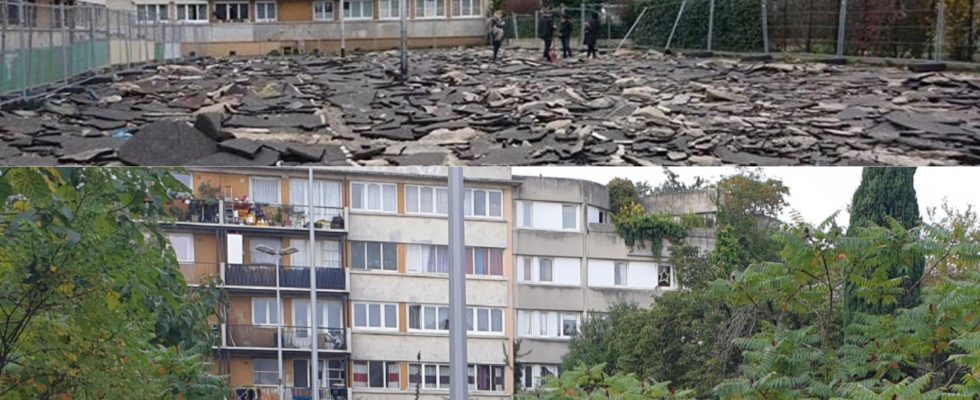The Joyful Garden of Aubervilliers, near Paris, grows on a former parking lot left as it is. Despite its very poor soil, asphalt and concrete, plants flourish there.
It’s an old parking lot, broken and condemned because of an urban rodeo. A chaos of bitumen and concrete that was left on site, as is, to avoid transporting waste elsewhere, and on which a garden grows, despite ” very poor and very superficial soil », as underlines François Vadepied, the landscaper who designed it with the Wagon Landscaping agency. The Joyful Garden, which bears the name of one of the buildings surrounding this former car park, accommodated around a hundred cars in a town in Aubervilliers, on the outskirts of Paris, until 2015.
Instead of parking and cars: an urban garden designed like an alpine garden, not because of the topography of the place (it’s all flat) but for the plants that have been selected. “ In the mountains, plants adapt to very rocky environments. Here, we just brought a little earth, to start a dynamic, which we simply slipped under the sheets of bitumen », says François Vadepied. And once we sowed and planted, in 2016, nature did its work.
Plants love stone
If we can still see a few pieces of bitumen, the vegetation has taken over. A good hundred species grow in place of cars. Guided tour with François Vadepied: “ There, we see small pines, alpine pines, which measure no more than 80 centimeters ». But right next door, on the edge, a job and a paulownia have grown several meters since they were planted. “ We also see thyme, oregano, aromatic plants which reseed very well on these soils, santolina… The plants quite like these stony environments because they put themselves, in a certain way, on stone, light and heat. And below, it’s in the shade, very protected, so the water stays and it stays quite cool ». This ecological garden is never watered. “ It has endured hellish heatwaves, but no tree has ever turned yellow. »
For the city’s residents, the garden has become an island of freshness. And other residents take advantage of this island of greenery, made up of an edge of planted trees and a meadow. “ When you walk here in spring or summer, there are lots of pollinators. People saw hedgehogs, the last time we came to garden, we saw a frog: it has become an interesting environment also ecologically in the neighborhood », concludes the landscaper. The Merry Garden and all its inhabitants seem to say: everything is so much happier without a car!
How do plants grow on the road?
Do they use their little muscular arms to push the asphalt aside? They actually take advantage of microcracks caused by water or frost in asphalt or concrete. A seed is deposited there, at the bottom, germinates, and the young shoot naturally goes out to seek the light. These are “pioneer” species, capable of colonizing hostile environments. But we also know a mushroom that really grows under the tar: the sidewalk agaric. It can break the asphalt, thanks to a phenomenon called turgor. The pressure of the water inside its cells causes an incompressible force: it splits the road.
